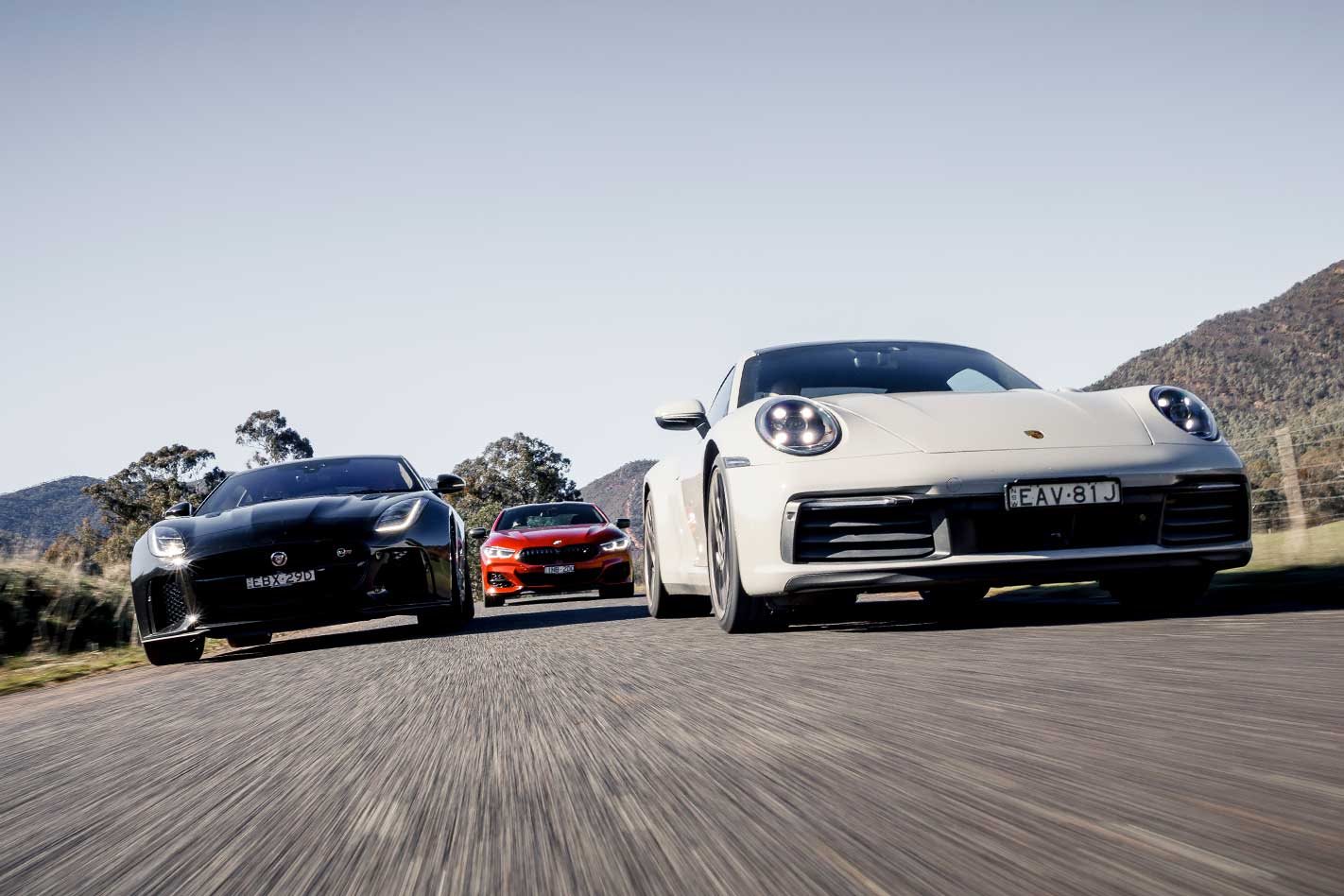When all-wheel drive made its cross-species transmission from off-road agricultural and military applications to the world of passenger cars, it first landed in the premium performance coupe market.
Audi gets most of the credit by creating the rally-revolutionising Ur-Quattro – and rightly so, to a degree – but 14 years before that, British company Jensen introduced the FF, a four-seat luxury GT that added a powered front axle to harness the 242kW/576Nm produced by its 6.3-litre V8. It was a complete flop – just 320-odd vehicles are believed to have been built between 1966-’71 – but the seeds were sown.
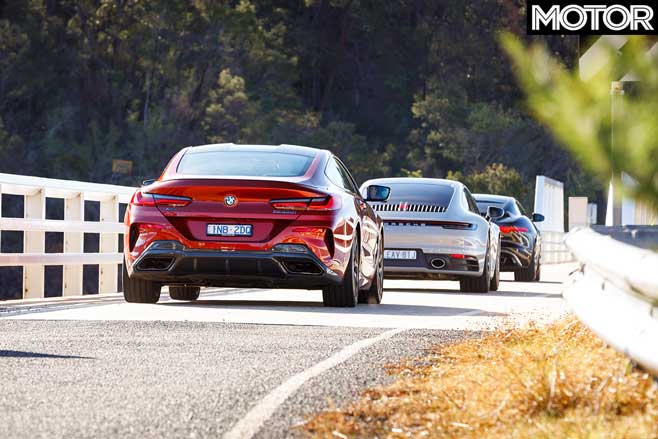
Five decades on, the BMW M850i proudly carries the torch first lit by the FF, a huge – and hugely expensive – four-seat grand tourer that deploys its massive V8 firepower to the ground through an automatic gearbox and all-wheel drive. If you need to travel long distances in comfort at high speed, the M850i, theoretically at least, is the car for you.
Despite the revival of the 8 Series badge that adorned BMW’s flagship coupe from 1990-1999, it’s essentially a successor to the F13 6 Series; the two cars are extremely similar in size, range and market positioning, though the M850i’s $272,900 starting price ($40K more than the previous 650i) vaults it into competition with the likes of the Mercedes S-Class Coupe and, yes, the Porsche 911.
All-wheel drive has been a staple of the 911 range since the 964-generation of 1989, which actually launched in Carrera 4 guise, the traditional rear-wheel drive Carrera arriving a year later.
The benefits of four driven wheels are less obvious in a car with the inherent traction advantage of a rear-mounted engine, but for the latest 992-generation, Porsche has revised the front-drive system with water-cooling for the front clutch and differential unit and reinforced clutch discs to handle extra torque.
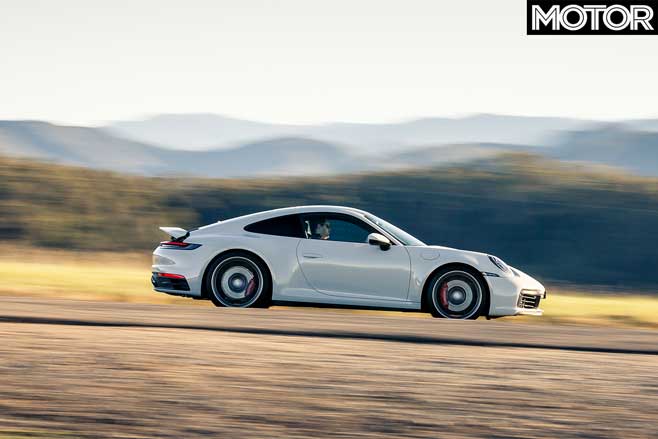
Parked side-by-side, the 911 and M850i might not leap out as natural rivals, but as their abilities have expanded the two have converged: the Porsche has the manners to be a legitimate grand tourer and the BMW’s performance gives it plenty of skin in the sports car game.
The outlier of this trio is the Jaguar F-Type SVR. Of the three, it’s the only one without back seats, the Ian Callum-penned bodywork pulled tightly over its mechanicals. The packaging eliminates any pretence of two-plus-two family friendliness, but it nevertheless inhabits a similar ecosystem to its German foes in price and performance, costing around $300,000 and using all-wheel drive to put its prodigious power to the ground, yet also offering sufficient comfort and convenience to make long-distance travel a pleasure, not a pain.

The F-Type furthers distances itself from its cross-channel competitors by eschewing new-age turbocharging for old-school supercharging. Combine forced induction with easily the largest engine here and it’s little wonder the Jaguar’s 423kW is the most on offer. In terms of power-to-weight, the SVR is head and shoulders clear of its rivals, offering 248kW/tonne to the Porsche’s 212kW/tonne and the BMW’s 206kW/tonne, though at 1705kg (25kg lighter than the regular F-Type V8) the Jaguar must be the densest all-aluminium two-seater going around.
Extracting its best in a straight line could not be simpler: load as many revs as possible against the torque converter before releasing the brakes and attempt to press the accelerator through the firewall.
The SVR lifts its nose and bolts away with zero wheelspin but a whole lot of noise, the 5.0-litre V8 producing a dry, crisp snarl, while each upshift sounds like the air is being ripped apart. Power continues to build right to the 6600rpm redline – the joy of a supercharged engine – and it’s fast. Really fast.
The sprint to 100km/h takes just 3.6sec, besting its claim by a tenth, and the entire quarter mile is completed in 11.55sec at a stonking 199.21km/h. Find a long enough road and you’ll hit 322km/h. Stopping is equally impressive, the monster optional carbon-ceramic brakes arresting the F-Type from 100km/h in 33.4m.
Launch the Beemer in the same manner as the Jag and it will clock 3.7sec to 100km/h, matching its claim, but activating the basic launch control system – it merely allows a few more revs to build prior to launch – shaves a few hundredths off for an incredible 3.63sec result.
Remember, this isn’t a full-on M-car and weighs two tonnes with driver and fluids, yet it will show a clean pair of heels to a first-generation Audi R8 V10 Plus. And not just to 100km/h, either. The M850i uses its 390kW/750Nm to good effect, continuing to pile on speed to cross 400m in 11.68sec at 194.24km/h.
The 4.4-litre twin-turbo V8 is an absolute monster, providing effortless, relentless acceleration, the thrust only tapering off over the last 500rpm or so. It sounds much angrier than you’d expect, too, the wet, gurgly growl a stark contrast to the Jag.
In the face of this V8 onslaught the 911 looks a little outgunned, offering just 331kW/530Nm from its 3.0-litre twin-turbo flat-six. Two things help the Porsche: its 1565kg undercuts the Jag by 140kg and the BMW by 325kg, and the kilowatts in Stuttgart tend to be particularly potent.
Launch control sets the tacho to 5000rpm before the clutches are dumped; the revs flare as the wheels scrabble for purchase, which suggests the 992 is struggling to get going. Apparently not, for 100km/h flashes by in 3.42sec and the quarter mile disappears in 11.43sec at 198.66km/h.
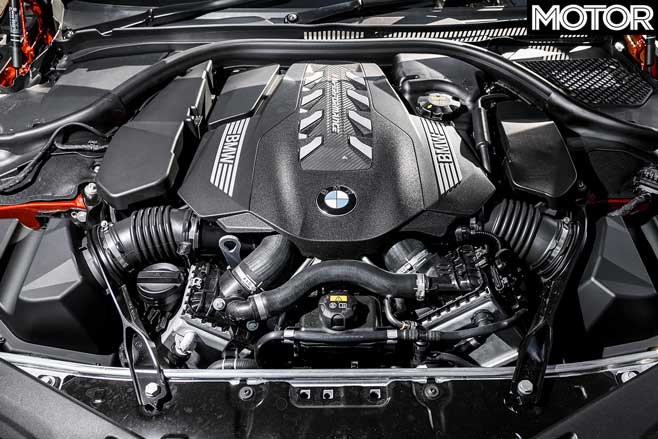
The Porsche and Jag are neck-and-neck all the way to 200km/h, the 911 holding a 0.08sec advantage over the SVR (11.66), the pair putting distance between themselves and the heavier BMW (12.45sec) as speeds increase. The 992 matches the F-Type for in-gear punch, bolting from 80-120km/h in just 2.1sec (the BMW a tenth slower), while it also stops the best, pulling up from 100km/h in just 31.19m.
Possibly the Porsche’s greatest trick is when you leave the drag strip and flick the new steering wheel-mounted drive mode dial – a retrograde step in style compared to the 991.2’s, if you ask me – from Sport Plus to Normal. Instantly, the suspension softens, the exhaust hushes and the engine relaxes, the 992 offering a greater level of comfort and refinement than any 911 before it.
Road noise is still a bugbear – it probably always will be – but the ride is outstanding for a sports car. There’s still an underlying firmness, but enough compliance to ensure most bumps are dealt with long before they reach the occupants.
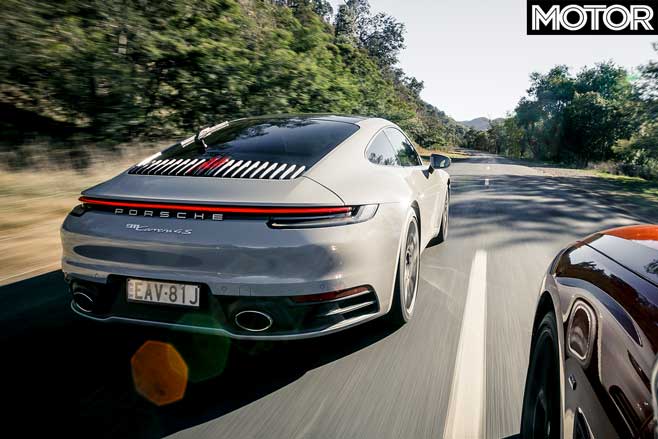
This provides a moment to appreciate the new 911’s interior, which brings with it a huge step in technology and connectivity. In general, it’s excellent: there’s more room front and rear, the driving position is perfect, the infotainment touchscreen is easy to use, and the twin digital screens flanking the iconic central tacho is a nice melding of tradition and today.
However, some of the plastics feel a bit cheap and it’s unclear why Porsche abandoned its habit of locating buttons either side of the gearlever – as per Panamera and Cayenne – and moved them to the dash, leaving large expanses of blank black plastic.
The Jaguar is snug. Its dash faces the driver, a giant grab handle cordoning off the passenger. The InControl infotainment has its critics, but is easy enough to navigate and all major controls are located within easy reach, while having the central air vent rise out of the dash never fails to impress.
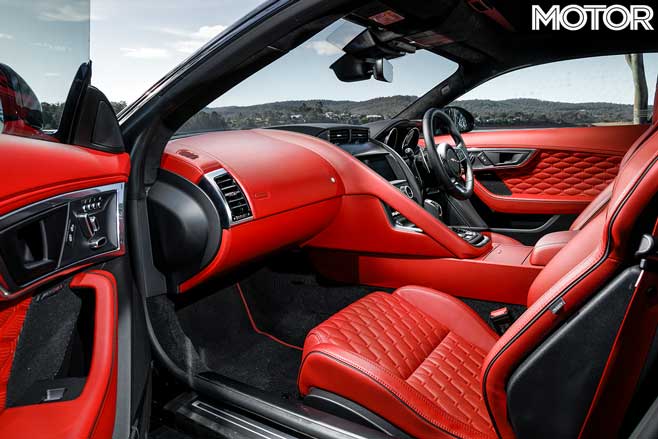
For an interior that’s six years old, it’s holding up well. Given the way it looks and sounds, you’d be forgiven for assuming the SVR chassis has all the subtlety of a Jason Statham fight scene, but it’s remarkably well judged.
Former JLR chassis engineer David Pook once explained that the SVR performed better in all ride metrics than the standard F-Type, and its ability to cushion bumps suggests he didn’t make this up. It gives the Jaguar a long-distance cruising ability that you might not expect from its vents-and-wings styling, but one that feels entirely fitting for the brand. Presumably, we can thank the fact that a lot of Britain’s roads are as crappy as Australia’s for this.

German roads, in general, are not, and you can feel this influence in the M850i. If you have a long distance to drive on smooth roads and the speed limit signs have black crosses on them, the BMW has a lot to commend it.
It has that special quality of making virtually all speeds feel the same; there’s little difference in its behaviour at 50km/h or two or three (or, presumably, four or five) times that. It remains extremely quiet and generally very comfortable. I’ll get to the qualifier in a moment, but first the interior. The materials are great, as is the design, befitting a premium grand tourer, but there are problems.
First is the packaging, a legacy from the 6 Series. It remains a mystery how a 4 Series Coupe can comfortably seat four adults yet the larger 8 Series struggles to qualify as a two-plus-two. Having virtually perfected iDrive, the latest version seems to be a step backwards in terms of intuitive use, likewise the drive mode selection buttons. On a more personal note, I deeply miss BMW’s old analogue instruments and would happily delete the Swarovski crystal gear lever, though others may disagree.
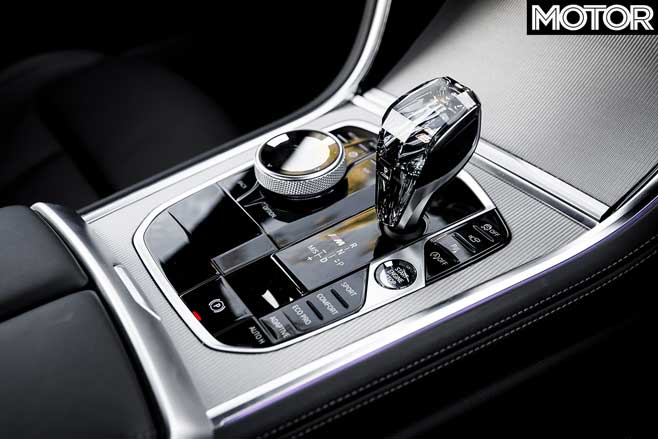
Returning to an earlier point, on a smooth, gently undulating road, the M850i is exceptionally comfortable, but introduce a few potholes and ridges and an element of choppiness appears, taking the shine off the grand touring experience.
Thankfully, BMW’s flagship two-door (at least until the M8 arrives) has the handling chops to somewhat justify the sportier ride. For a car of its size and weight, it’s truly remarkable what the M850i is capable of on a twisty road, aided as it is by a comprehensive suite of chassis technology: variable ratio steering, all-wheel steering, active anti-roll bars and all-wheel drive with an electronically controlled rear diff.
It proves its worth in tight bends, with sharp turn-in from the quick-ratio rack, the rear-wheel steer helping rotate the car; the active anti-roll bars prevent excessive weight transfer and the rear-biased all-wheel drive allows the throttle to be applied early and eagerly. There’s even power oversteer available if you’re prepared to find it.
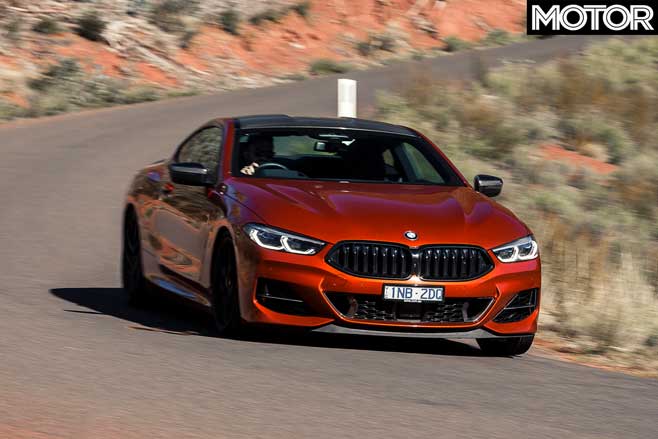
It’s undoubtedly effective, but the technology does feel to put another layer between the driver and the road. The driving position is quite high – at least compared to the other two – which only exacerbates the sensation, and it’s brought to the fore in faster turns. The absence of roll makes it difficult to feel how hard you’re pushing, while the quick steering offers accuracy but not a lot of communication.
Once you’re set in a long, quick corner it’s great, but getting there takes a small leap of faith. Make no mistake, the M850i is genuinely enjoyable to drive, for its beastly engine as well as its handling talents, but it does feel aloof – the technology no doubt enhances its abilities, but it diminishes the experience.
The Porsche can also be optioned with all manner of similar chassis gizmos, but none are fitted to our test 4S and it’s no worse off for it. To say the 992 911 does nothing wrong is accurate, yet also sells it short. It’s really only when you drive it in comparison with two other – extremely competent and capable – rivals that you realise what an incredibly high level it’s operating at.
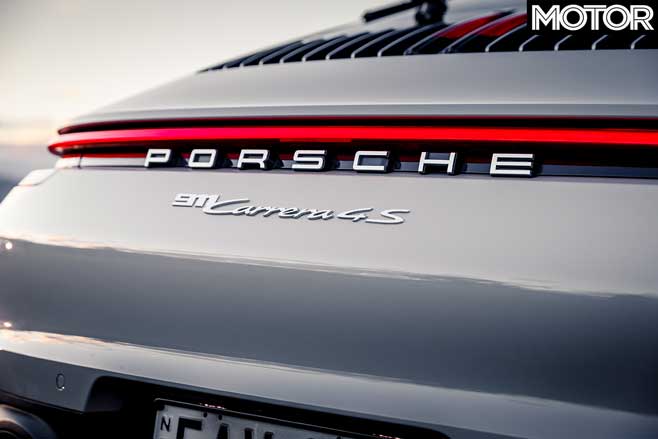
It goes without saying that it has outstanding grip and is capable of insane speeds, but it’s the details where the Porsche separates itself. There’s feedback from the steering and a connection to the chassis the BMW can only dream about, partly thanks to the 911’s new-generation adaptive dampers, which are actually softer in normal mode than their predecessors. It allows the 992 to soak up bumps, the body bobbling slightly and leaning in corners, sensations that give the driver a sense of what the car is up to at any given moment.
Consequently, it still feels like a 911. Yes, the quirks are nothing like what they used to be – driven in a conventional fashion, the 992 is outrageously quick – but understeer will punish impatient throttle applications. There’s too much grip to unload the rear under brakes on the road, but hit the accelerator at the right time and it neutralises beautifully under power.
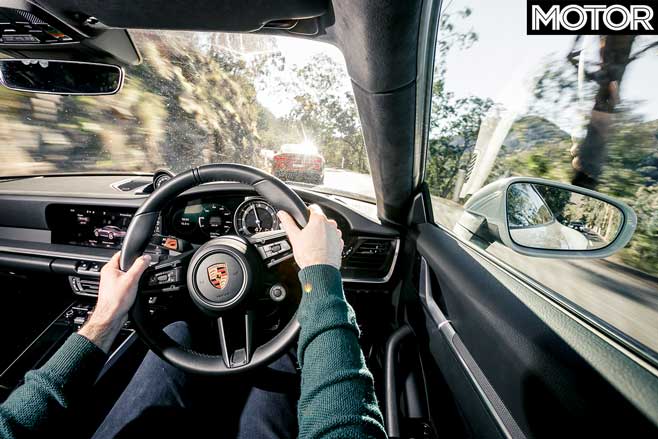
The brakes are brilliant, the transmission telepathic, and it never, ever feels like it’s getting tired, regardless of how hard you thrash it. It even sounds good, doing an uncanny air-cooled impression for bystanders under heavy load at low rpm, morphing in a more cultured howl with plenty of over-run histrionics.
But if it’s theatre you want, the F-Type SVR is the car for you. The supercharged V8’s throttle response is so sharp it makes the BMW feel flaccid and even the 911 a bit lazy. It’s matched by a hyper-responsive chassis that takes time to gel with.
Drive the Jaguar after the Porsche and it feels to be all over the place, constantly reacting to bumps and irregularities in the road, the darty steering then resulting in an over-correction. Inputs need to be small and carefully measured in order to use the F-Type’s agility to your advantage.
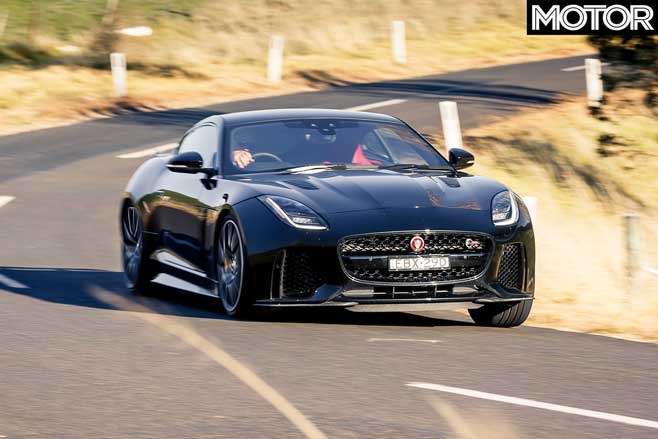
It pivots sharply around its middle; unlike the 911, it’s no trouble to unstick the Jag’s shapely posterior under brakes – excellent carbon-ceramic items, since you ask – and picking up the throttle holds it there. The all-wheel drive system is extremely well judged, offering enough power oversteer to entertain but total traction. As much as I miss the wonderfully mad (and now discontinued) rear-drive F-Type R, which had as much rear grip as wet soap, it is nice to be able to exploit the engine’s enormous reserves.
Sync with the Jaguar’s unique rhythm, give it a long enough leash to move around, and it can cover ground at an astonishing rate, inducing a face-splitting grin while doing so. It also looks amazing, sounds incredible and in some respects makes the Porsche feel a bit serious, like it hasn’t quite understood the joke.
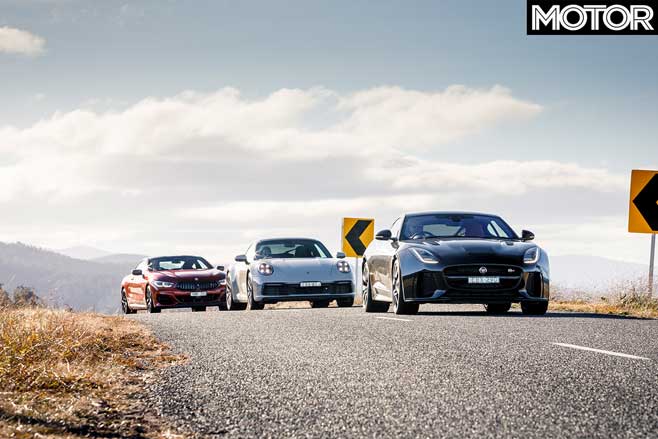
It would be interesting to drive a ‘true’ F-Type SVR: for instance, ditch the electric seats and solid glass roof and you’d save 100kg or more. The same could be said of the 911, but then the German doesn’t weigh more than 1700kg. Nevertheless, the Jag is an intoxicating machine that has the character to gloss over its flaws.
There’s much to commend the BMW: imposing looks (especially with the optional carbon pack fitted to our test car), incredible performance, surprisingly deft dynamics and a level of refinement beyond its sportier competitors. However, the M850i does feel a bit too clever for its own good. The chassis gizmos undoubtedly help defy physics, but I’d happily trade 10 per cent of its handling nous for more feedback and greater ride comfort; a week in a 740i following this test shows how plush BMW can make a car when it wants to.
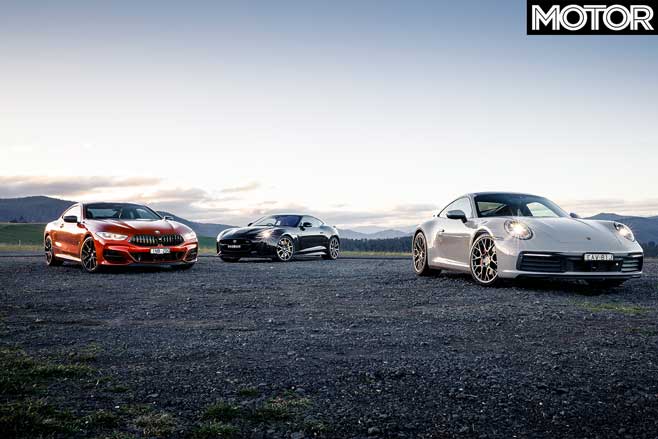
Which just leaves the Porsche. We realise a 911 victory is a boring verdict, but it’s an unavoidable one when they remain so damn good. It’s the quickest and most capable car here when driven hard and more than happy to tackle a racetrack, yet is the most comfortable and economical in day-to-day use. A kerb weight of 1565kg will shock the purists and an as-tested price of $326,020 seems a lot, but in real terms the C4S is cheaper than it was a decade ago. The 992 is a masterpiece, improving in areas we didn’t even realise needed improving. It’s a simply exceptional sports car.
Fast Facts

| u00a0 | Porsche 911 Carrera 4S | Jaguar F-Type SVR | BMW M850i |
| Body | 2-door, 4-seat coupe | 2-door, 2-seat coupe | 2-door, 4-seat coupe |
| Drive | all-wheel | ||
| Engine | 2981cc flat-6, DOHC, 24v, twin-turbo | 5000cc V8, DOHC, 32v, supercharger | 4395cc V8, DOHC, 32v, twin-turbo |
| Bore x Stroke | 91.0 x 76.4mm | 92.5 x 93.0mm | 89.0 x 88.3mm |
| Compression | 10.2:1 | 9.5:1 | 10.5:1 |
| Power | 331kW @ 6500rpm | 423kW @ 6500rpm | 390kW @ 5500-6000rpm |
| Torque | 530Nm @ 2300-5000rpm | 700Nm @ 3500-5000rpm | 750Nm @ 1800-4600rpm |
| Power/Weight | 212kW/tonne | 248kW/tonne | 206kW/tonne |
| Transmission | 8-speed dual-clutch | 8-speed automatic | |
| Weight | 1565kg | 1705kg | 1890kg |
| Suspension | struts, coil springs, adaptive dampers, anti-roll bar (f); multi-links, coils, adaptive dampers, anti-roll bar (r) | double wishbones, adaptive dampers, anti-roll bar (f/r) | struts, coil springs, adaptive dampers, anti-roll bar (f); multi-links, coils, adaptive dampers, anti-roll bar (r) |
| L/W/h | 4519/1852/1300mm | 4475/1923/1311mm | 4851/1902/1346mm |
| Wheelbase | 2450mm | 2622mm | 2822mm |
| Tracks | 1589/1557mm (f/r) | 1585/1611mm (f/r) | 1627/1642mm (f/r) |
| Steering | electrically assisted rack-and-pinion | ||
| Brakes (f) | 350mm ventilated/drilled discs, 6-piston calipers | 398mm ventilated/drilled carbon-ceramic discs, 6-piston calipers | 395mm ventilated discs, 4-piston calipers |
| Brakes (r) | 350mm ventilated/drilled discs, 4-piston calipers | 380mm ventilated/drilled carbon-ceramic discs, single-piston calipers | 398mm ventilated discs, single-piston calipers |
| Wheels | 20 x 8.5-inch (f); 21 x 11.5-inch (r) | 20 x 10.0-inch (f); 20 x 11.0-inch (r) | 20 x 8.0-inch (f); 20 x 9.0-inch (r) |
| Tyre Sizes | 245/35 ZR20 (f); 305/30 ZR21 (r) | 265/35 ZR20 (f); 305/30 ZR20 (r) | 245/35 ZR20 (f); 275/30 ZR20 (r) |
| Tyres | Goodyear Eagle F1 | Pirelli P-Zero | Michelin Pilot Super Sport |
| Price | $281,100 ($326,020 as-tested) | $297,242 ($329,012 as-tested) | $275,900 ($283,900 as-tested) |
| Pros | Speed; precision; brakes; stamina; almost everything | Supermodel looks; playful handling; V8 noise | Remarkable performance and handling; refinement |
| Cons | Some iffy interior details; weighs quite a lot for a 911 | Can feel darty and disturbed on poor roads | Tech overload; ride on poor surfaces; packaging |
| Rating | 5 out of 5 stars | 4 out of 5 stars | 4 out of 5 stars |
The Strip
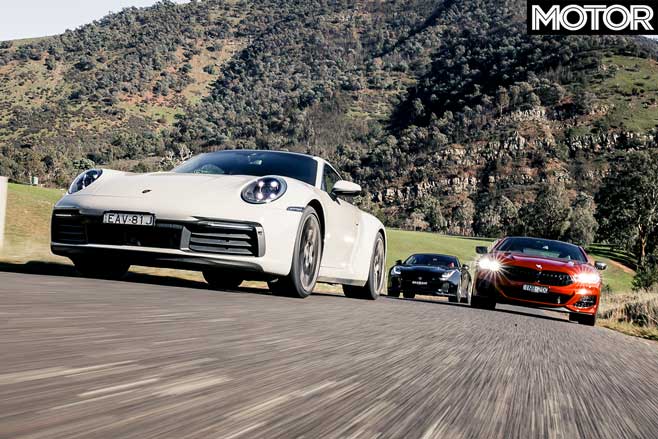
| u00a0 | Porsche 911 Carrera 4S | Jaguar F-Type SVR | BMW M850i |
| 0-10km/h | 0.25sec | 0.23sec | 0.21sec |
| 0-20km/h | 0.54sec | 0.55sec | 0.53sec |
| 0-30km/h | 0.84sec | 0.85sec | 0.89sec |
| 0-40km/h | 1.15sec | 1.16sec | 1.21sec |
| 0-50km/h | 1.48sec | 1.52sec | 1.54sec |
| 0-60km/h | 1.81sec | 1.85sec | 1.89sec |
| 0-70km/h | 2.13sec | 2.27sec | 2.22sec |
| 0-80km/h | 2.54sec | 2.71sec | 2.67sec |
| 0-90km/h | 2.96sec | 3.15sec | 3.10sec |
| 0-100km/h | 3.42sec | 3.60sec | 3.63sec |
| 0-110km/h | 3.96sec | 4.22sec | 4.17sec |
| 0-120km/h | 4.56sec | 4.86sec | 4.78sec |
| 0-130km/h | 5.18sec | 5.49sec | 5.46sec |
| 0-140km/h | 5.88sec | 6.13sec | 6.25sec |
| 0-150km/h | 6.58sec | 6.79sec | 7.05sec |
| 0-160km/h | 7.48sec | 7.65sec | 7.90sec |
| 0-170km/h | 8.41sec | 8.52sec | 8.94sec |
| 0-180km/h | 9.38sec | 9.42sec | 10.02sec |
| 0-190km/h | 10.42sec | 10.38sec | 11.15sec |
| 0-200km/h | 11.58sec | 11.66sec | 12.45sec |
| 0-400m | 11.43sec @ 198.66km/h | 11.55sec @ 199.21km/h | 11.68sec @ 194.24km/h |
| 80-120km/h (Drive) | 2.1sec | 2.1sec | 2.2sec |
| 100-0km/h | 31.19m | 33.40m | 35.36m |
| Speed in Gears | |||
| 1st | 66km/h @ 7500rpm | 71km/h @ 7500rpm | 53km/h @ 6500rpm |
| 2nd | 102km/h @ 7500rpm | 107km/h @ 7500rpm | 83km/h @ 6500rpm |
| 3rd | 151km/h @ 7500rpm | 159km/h @ 7500rpm | 133km/h @ 6500rpm |
| 4th | 208km/h @ 7500rpm | 201km/h @ 7500rpm | 170km/h @ 6500rpm |
| 5th | 275km/h @ 7500rpm | 261km/h @ 7500rpm | 223km/h @ 6500rpm |
| 6th | 306km/h @ 6640rpm | 322km/h @ 6330rpm* | 250km/h @ 5540rpm* |
| 7th | 306km/h @ 5380rpm* | 322km/h @ 5310rpm* | 250km/h @ 4570rpm* |
| 8th | 306km/h @ 4310rpm* | 322km/h @ 4220rpm* | 250km/h @ 3550rpm* |
Heathcote Raceway, 15˚C, dry. Driver: Scott Newman *Manufacturer’s claim Official timing supplier: www.vboxaustralia.com.au
AWD Curiosities: 1988 BMW 325ix A winter wonder rather than street fighter
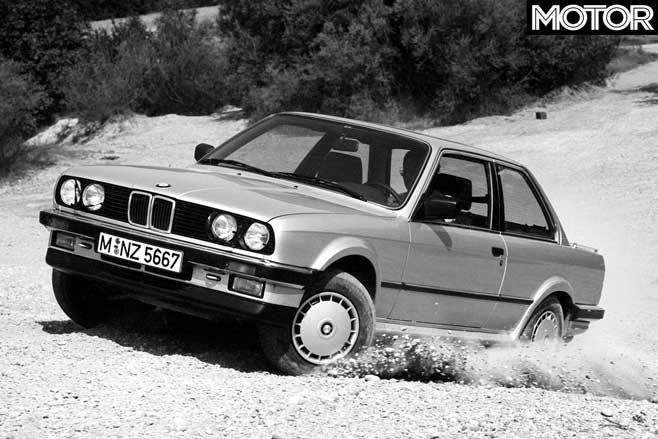
Missed under the (justified) furore of the E30 M3’s giant-killing race results, the four-wheel drive BMW 325ix also received FIA homologation, though in practice its system was more focused on year-round traction than increased performance.
Powered by the smooth 2.5-litre inline-six of the 325i, the 325ix was predominantly sold in Europe and North America and used a Ferguson transfer box and two viscous couplings – one each for the rear and centre differentials. Drive split was rear-biased to 63:37, the front drive using an open differential mounted in the engine’s sump.
Heavier and slower than the rear-drive 325i, the ix wasn’t popular among enthusiasts, though it paved the way for the modern, highly variable xDrive system seen today. – Adam Davis
AWD Curiosities: Porsche 953 Taking four to the fore in 1984
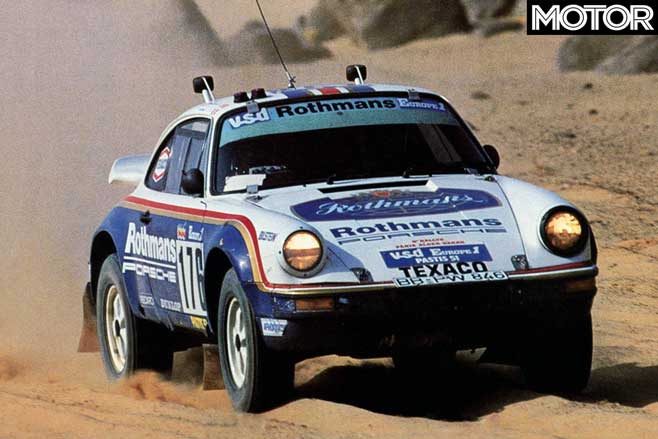
With all its on-track success, you could be forgiven for forgetting that the Porsche 911 also has a strong multi-surface motorsport history. Early 911s were as much about rallying as racing, with three successive Monte Carlo Rally wins to prove it.
Maximising the power of Group B regulations, Porsche then developed a four-wheel drive 911, coded 953, to tackle long-distance desert events, winning the Paris-Dakar outright in 1984 with the 911 SC-based machines. The 953 featured a ‘switchable’ mechanical four-wheel drive system that could be engaged via a cockpit-mounted switch as the driver required.
Learnings from the 953 program were adopted into the 959 supercar, and from the 964-series 911 in 1989, Porsche has always offered a four-wheel drive 911 variant – a trend that continues with the current Carrera 4S. – Adam Davis
AWD Curiosities: Jaguar XJ220 Concept When compromise overcomes purity of spirit
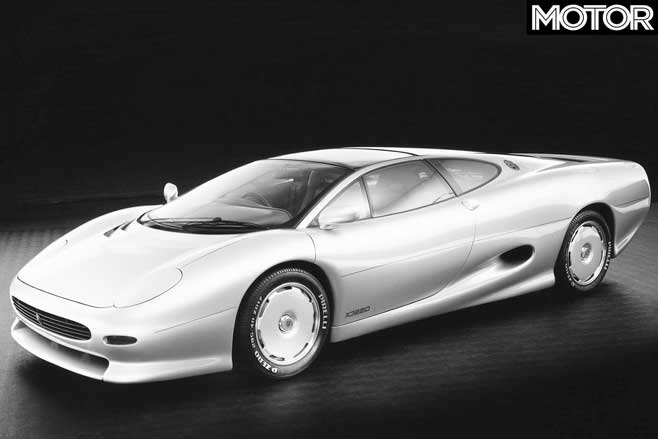
Even if the production Jaguar XJ220 was (briefly) the fastest car in the world, the public – not to mention the early depositors – were massively disappointed. But why?
The XJ220 Concept’s original specification included a Le Mans-bred atmo V12, as well as Jaguar’s first take on a four-wheel drive system.
With expert guidance from Tony Rolt’s FF Developments (think Jensen FF and the 1961 Ferguson P99 F1 car), the concept team developed a mid-engine-friendly drive system. Front wheels were driven off the rear transaxle via a shaft that was ingeniously mounted through the engine’s vee, finally being split between the fronts via an inverted differential.
Alas, complications, weight, time and cost were against the concept ever seeing the light of day… but its spirit is present in today’s F-Type SVR. – Adam Davis


